
A salesman in South Georgia once told me he knows it’s football season when he rolls down his car windows and catches a whiff of the pre-harvest defoliant sprayed on cotton. “To me,” he said, “that’s fall.”
You could lift your nose high in the air for a long time in Atlanta and never catch a stray scent like that. Yet an hour before kickoff on a Friday night this past September, the boom burbs of Milton and Roswell were acting like their old small-town selves. A communal picnic—tailgating without booze—had broken out all over Milton High’s vast campus, where families and friends clumped together on patches of grass and strips of asphalt to eat pizza, grill burgers, and pick at potluck spreads. Kids tossed around footballs in fields that once were pastures where horses grazed.
It was fall.

 Similar scenes played out in hundreds of towns across Georgia, from Moultrie to Thomson to Rome. College football might stir us into competing nations, and pro football endures as our sleazy vice, but high school football remains the region’s most personal, most locavore youthful expression.
Similar scenes played out in hundreds of towns across Georgia, from Moultrie to Thomson to Rome. College football might stir us into competing nations, and pro football endures as our sleazy vice, but high school football remains the region’s most personal, most locavore youthful expression.
When the Roswell Hornets and Milton Eagles first played each other in 1950, Roswell had barely 2,000 residents, and even those country folk considered Milton High to be in the sticks. Roswell’s population has since grown to almost 90,000, while Milton has swelled into its own city of nearly 34,000 mostly well-off citizens. The farms, irrigation ponds, and empty spaces that lined the pungently named roads that connect the schools—Hardscrabble, Crabapple—have been overtaken by upscale subdivisions, trattorias, and boutiques with names like the Twisted Thread.
 Still, even as the accents fade and the roots thin, the high school gridiron remains the gathering spot of choice for successive generations. Those giant rectangles with the homey stands just might be the last critical mass repositories of our next-door neighbors’ win-lose histories, dreams, and failures.
Still, even as the accents fade and the roots thin, the high school gridiron remains the gathering spot of choice for successive generations. Those giant rectangles with the homey stands just might be the last critical mass repositories of our next-door neighbors’ win-lose histories, dreams, and failures.
“We don’t have the rural flavor anymore. It’s more a ‘my country club is better than your country club’ kind of thing,” John Coen, Roswell’s athletic director, said of the sixty-five-year rivalry between the Hornets and Eagles—a rivalry once so fierce it was suspended for six years after a fight marred the 1963 game. “But the new people moving in catch on pretty quickly.”
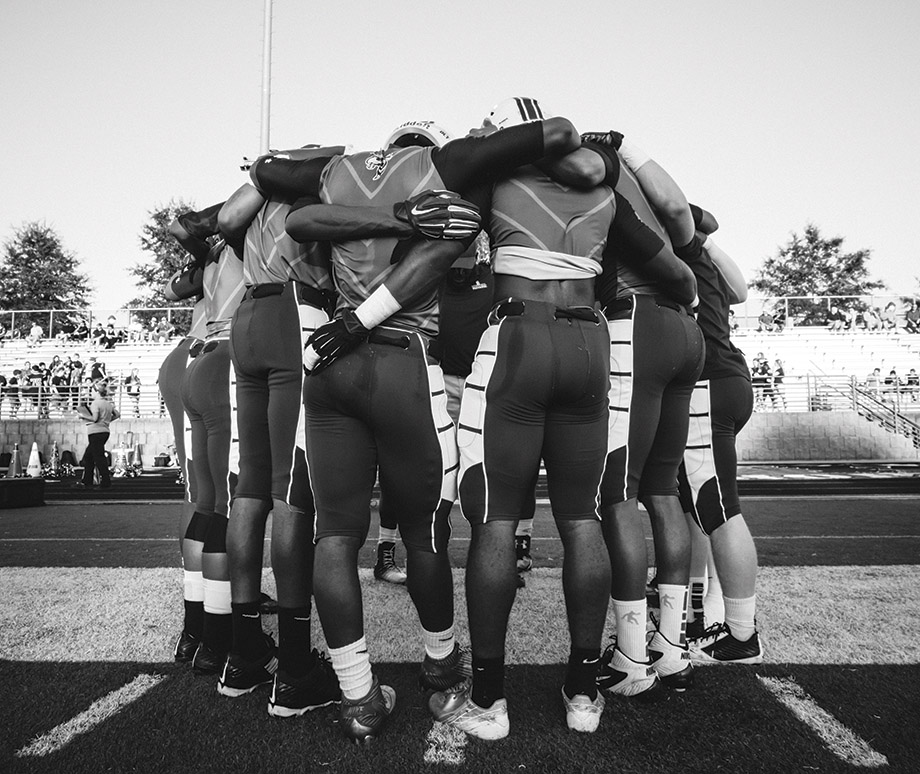 Each cul-de-sac, it seems, still wants something to distinguish it from every other cul-de-sac, and high school football’s reach is still visceral enough, still house-by-house enough, to drill down to street level. A recent redistricting transformed Roswell homes into Milton homes—Hornet love into Eagle love—almost overnight. “We’ve exchanged green for red,” said Kyle Robinson, whose neighborhood changed district lines. Robinson’s two older sons graduated from Roswell High; his third son is now a sophomore junior varsity quarterback for Milton. “I feel like we’ve moved, but we haven’t,” he said.
Each cul-de-sac, it seems, still wants something to distinguish it from every other cul-de-sac, and high school football’s reach is still visceral enough, still house-by-house enough, to drill down to street level. A recent redistricting transformed Roswell homes into Milton homes—Hornet love into Eagle love—almost overnight. “We’ve exchanged green for red,” said Kyle Robinson, whose neighborhood changed district lines. Robinson’s two older sons graduated from Roswell High; his third son is now a sophomore junior varsity quarterback for Milton. “I feel like we’ve moved, but we haven’t,” he said.
Although the week’s buildup now begins with a war-of-few-words on Twitter, everything else is throwback. The game-day pep rally inside Roswell’s gym still had players entering like shyly swaggering royalty, cheerleaders executing pyramids, and boys in drag imitating the opposing cheerleaders. Meanwhile, Milton kids donned camo to mock a Roswell tradition, and a group of boys calling themselves Bravehearts splashed their bodies with war paint.
By game time, the fans overflowed Milton’s 4,000-seat Eagles Nest, set quaintly in a bowl near the high school, its home-side stands rising up a grassy hillside. The festival atmosphere stopped, as it always does, at the locker room door. “You scared?” a Roswell assistant coach asked the silent rows of players who lined a hallway outside the visitors locker room, ready to take the field. “Go home. Nobody’s going to judge.”
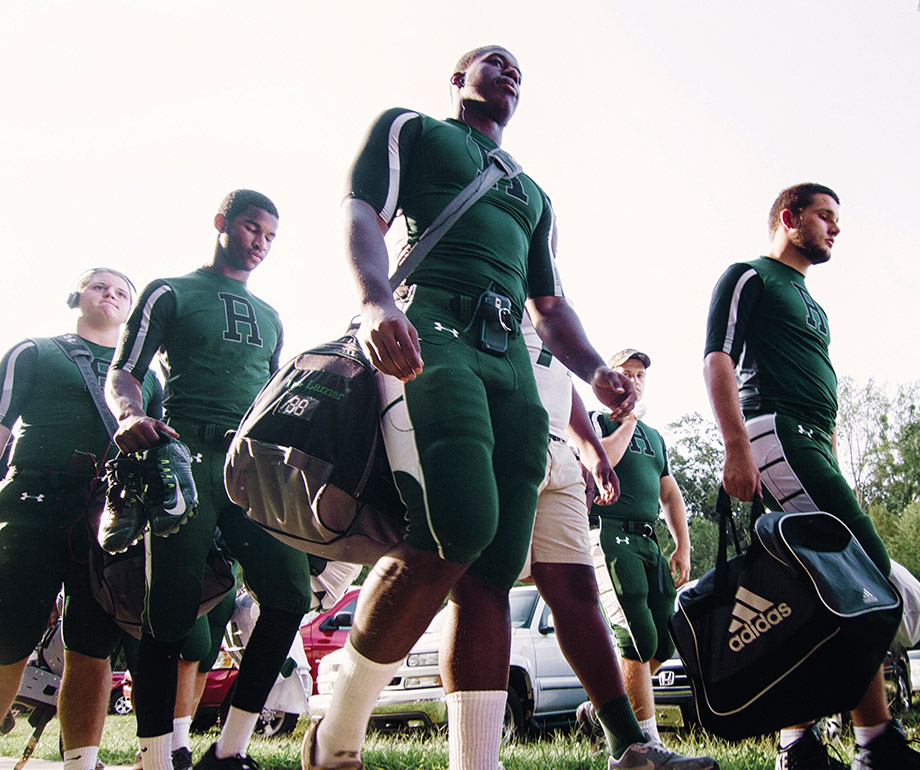
The evening’s theatrics opened with Roswell kids punctuating the kickoff by tossing bags of flour high in the air. The students were bleached white for the rest of the night, looking like characters from a slapstick silent movie. The Milton students did the same—another ironic send-up of their rivals.
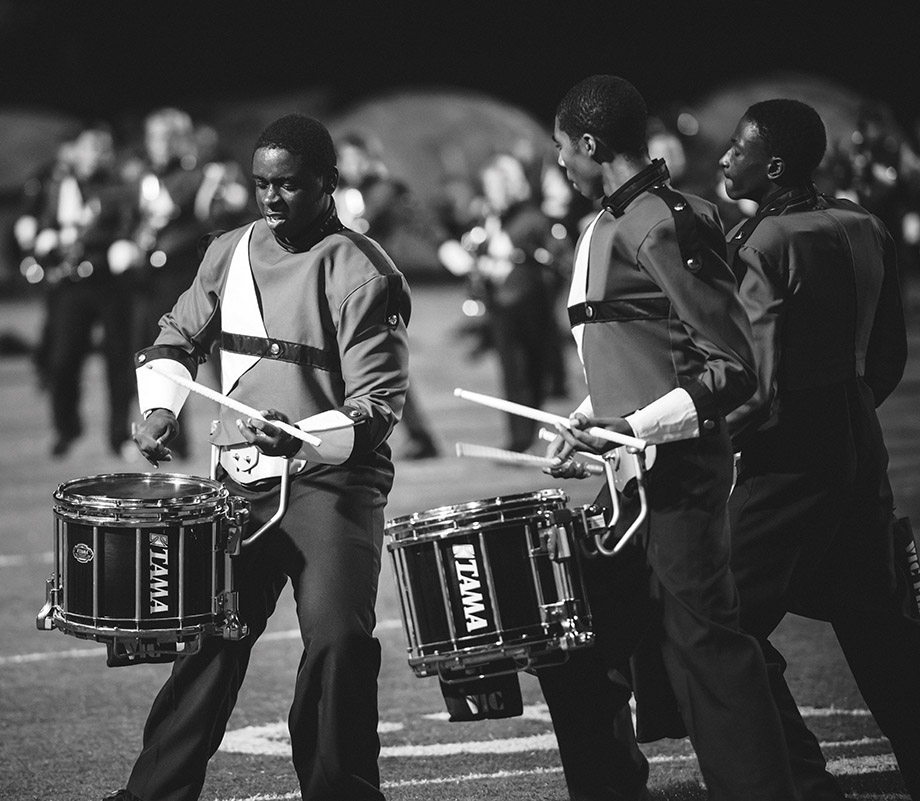 The game was electric, as it often is in Georgia, where the talent level is almost unmatched; only California, Florida, and Texas had more players on opening-day NFL rosters. Teams exchanged leads as one big play followed another: a ninety-six-yard touchdown return, a sixty-five-yard touchdown run up the middle. It was clear early on that the last big play would win—and with twenty-three seconds left, Roswell receiver Mechane Slade caught a tipped pass in the end zone to give the Hornets a two-point victory. Roswell fans flooded the field; Milton players hung their heads, turned to the sideline, looked into the stands, and then raised their helmets as the band played the school’s dirge-like alma mater.
The game was electric, as it often is in Georgia, where the talent level is almost unmatched; only California, Florida, and Texas had more players on opening-day NFL rosters. Teams exchanged leads as one big play followed another: a ninety-six-yard touchdown return, a sixty-five-yard touchdown run up the middle. It was clear early on that the last big play would win—and with twenty-three seconds left, Roswell receiver Mechane Slade caught a tipped pass in the end zone to give the Hornets a two-point victory. Roswell fans flooded the field; Milton players hung their heads, turned to the sideline, looked into the stands, and then raised their helmets as the band played the school’s dirge-like alma mater.


Amid the chaos, Roswell defensive coordinator Tommy Gilstrap took it all in with a private, almost prayerful, satisfaction. He was thinking back to September 29, 1978. Gilstrap was number 43 then, a wiry running back and linebacker for the Roswell Hornets. Nothing meant more to him than beating Milton, and he’d run around the Eagles defense all night long. With two minutes left and trailing 13–7, Roswell had a first and goal on the Milton five-yard line. Gilstrap took the handoff. A hole opened inside, but he’d had luck bouncing wide, so he decided to head out there one more time. A Milton defender was waiting and put his helmet square on the ball. It popped out of Gilstrap’s hands. A Milton kid fell on it. Game over.
“I know I lost that game,” Gilstrap said. “I knew what I’d done was wrong, and I also knew that every player on the Roswell team would remember me because of that play. It was just that important. I know to this day they remember what happened on the goal line when they say my name and Milton.”

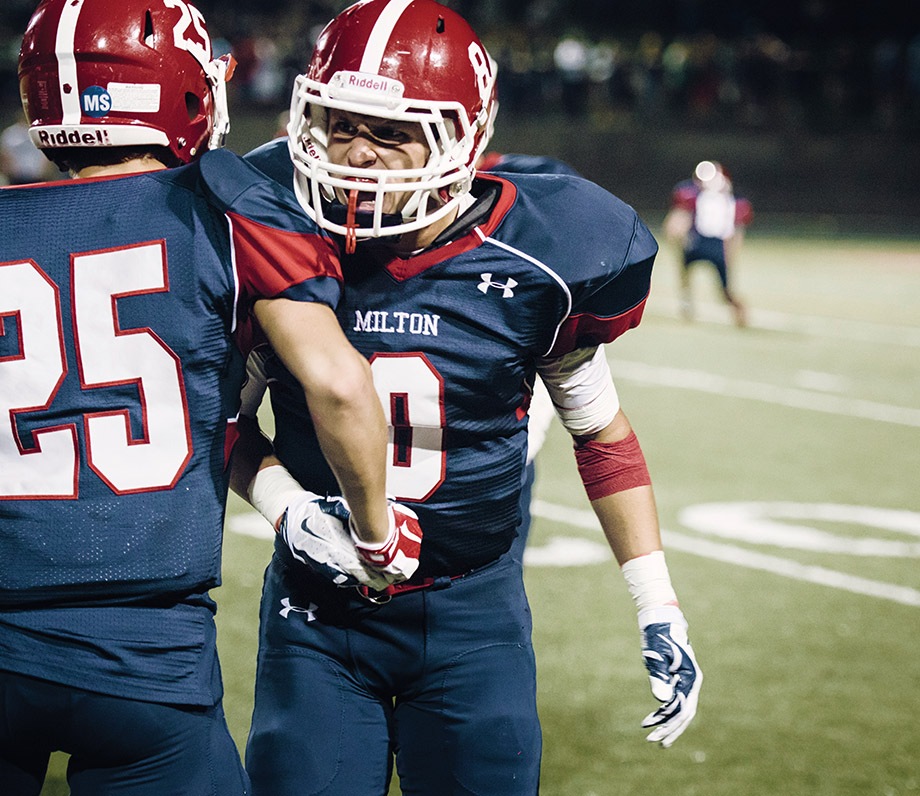
Gilstrap, now fifty-two, went on to play at Georgia Southern, then to coach high school football all over the state for twenty-nine years. This spring, Coen called to offer him a job back at Roswell. “I’ve waited thirty-six years for this,” he said of the win over Milton. “I didn’t know it still meant this much to everyone. But it does. You can’t touch what I feel tonight.”
Eventually I made my way to the top of the visitors stands and, before heading to my car in a far lot, looked back down on the field one last time. Nobody had left. The scoreboard was dark, but the field lights still burned bright. They’d never forget this. Anytime they passed a big green field, just like all those who played before them, they’d remember, at least for a moment, what it feels like to be young.
This article originally appeared in our November 2014 issue.





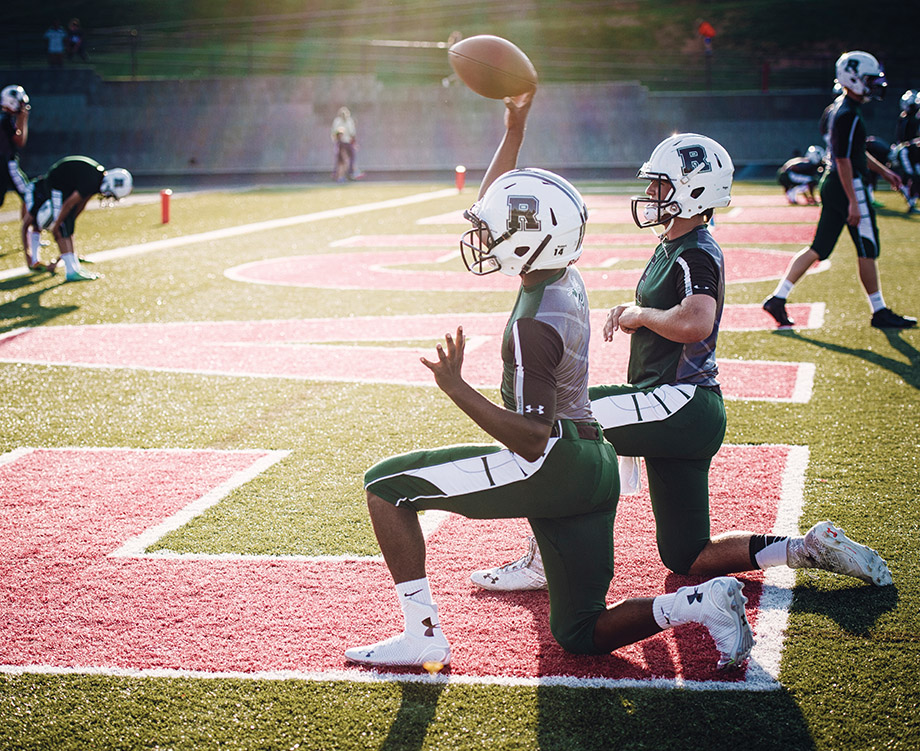





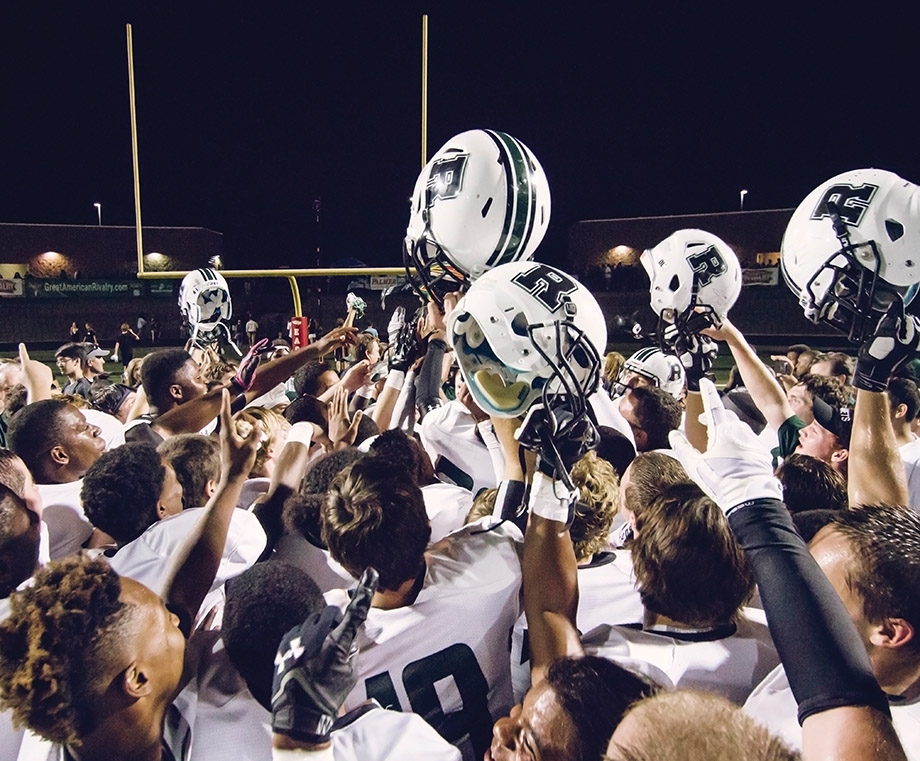







![The North Carolina Museum of Natural Sciences’ newest exhibit is a [pre]historic first](https://cdn2.atlantamagazine.com/wp-content/uploads/sites/4/2024/04/DD-3-100x70.jpg)


